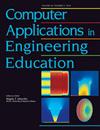Deploying Open Source Acausal Modelling Software in Teaching Vehicle Dynamics Course
Abstract
The present day economic scenario and market conditions has necessitated the importance of Science, Technology, Engineering and Mathematics (STEM) education to be industry oriented and interdisciplinary. This requires a rigorous curriculum coupled with pro active engagement of student learners. The engineering industry has adopted modelling and simulation technique for many of the apparent benefits including less time to market and reduced product development costs. In such a state of affairs, STEM courses pertaining to modelling and simulation are quintessential. The presented paper explains about the pedagogical exercise carried over in the Vehicle Dynamics course conducted for the final year Automobile Engineering students. The students were introduced to Acausal modelling approach for two fundamental exercises—single degree of freedom system, quarter car model—conducted for the laboratory sessions of the Vehicle dynamics course. The acausal modelling approach was compared with causal modelling approach which had been the widely deployed modelling technique. Matlab Simulink software was utilized for causal modelling and the open source platform OpenModelica was utilized for acausal modelling. Simulink/Simscape library was also utilized for comparison. The modelling time has reduced by 20%–37.5% for single degree of freedom system and by 10%–60% for quarter car model in acausal modelling approach. Most of the students agreed in a survey about the ease and simplicity when using acausal modelling technique when compared with causal modelling technique.

 求助内容:
求助内容: 应助结果提醒方式:
应助结果提醒方式:


